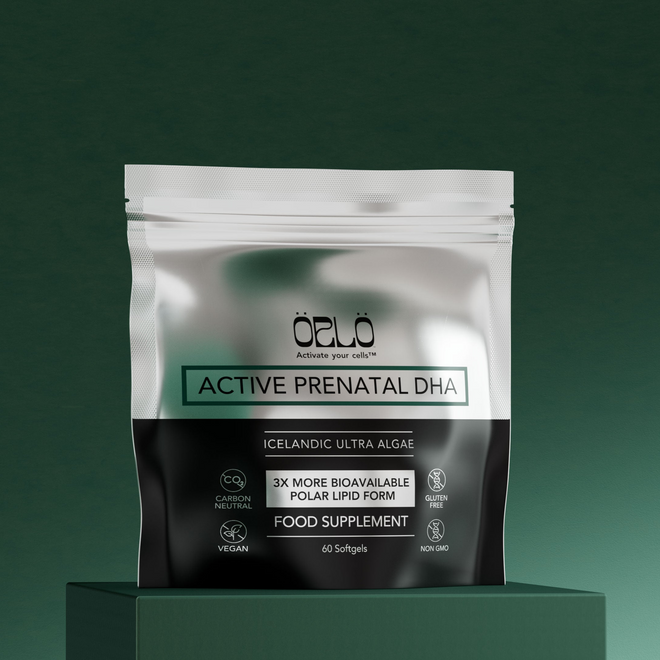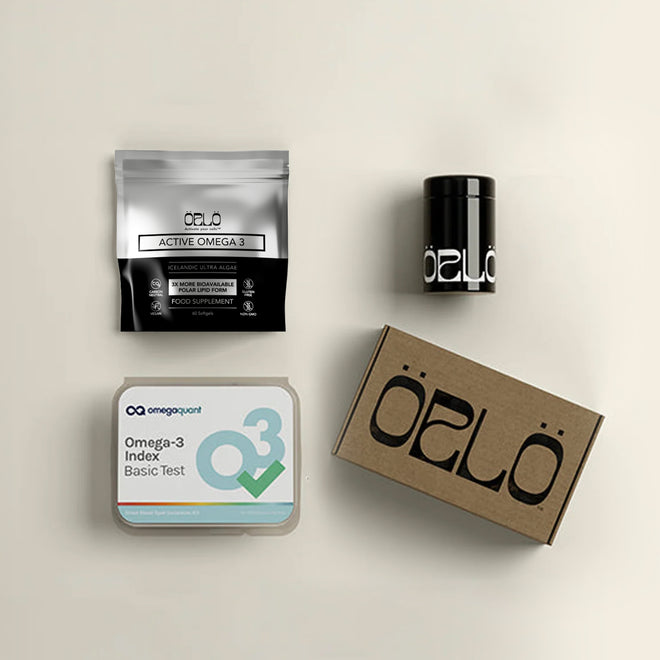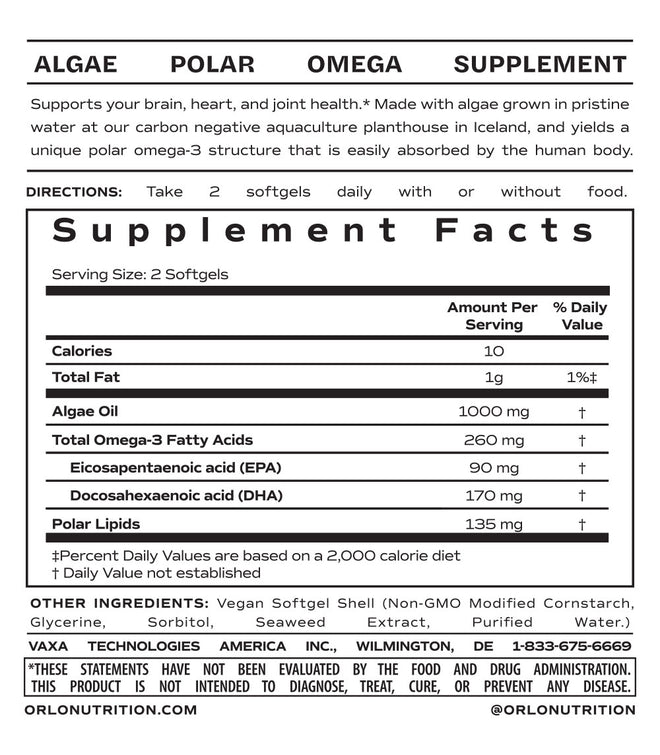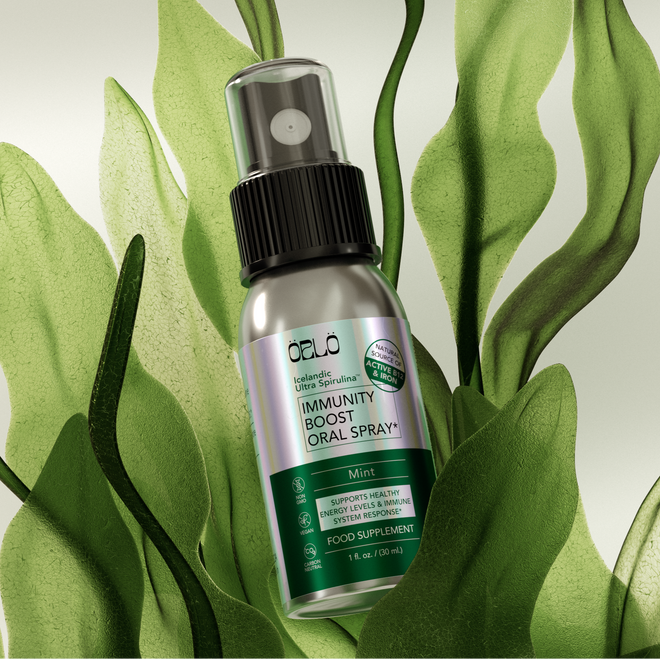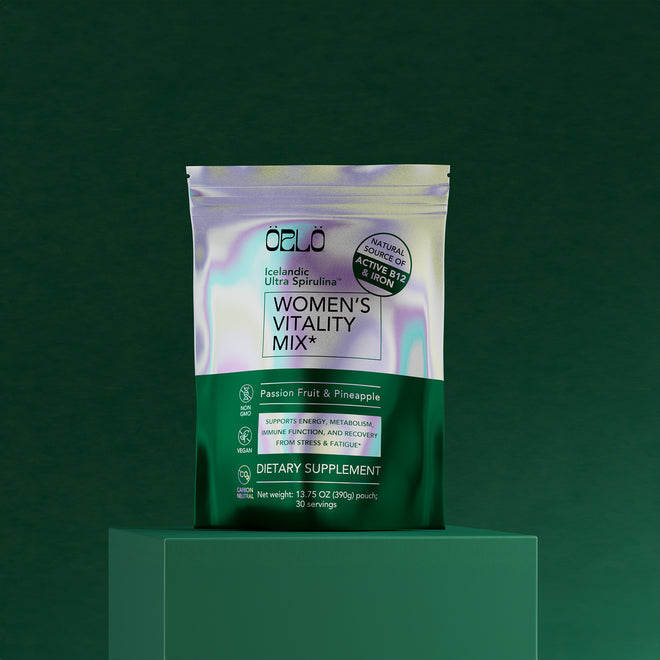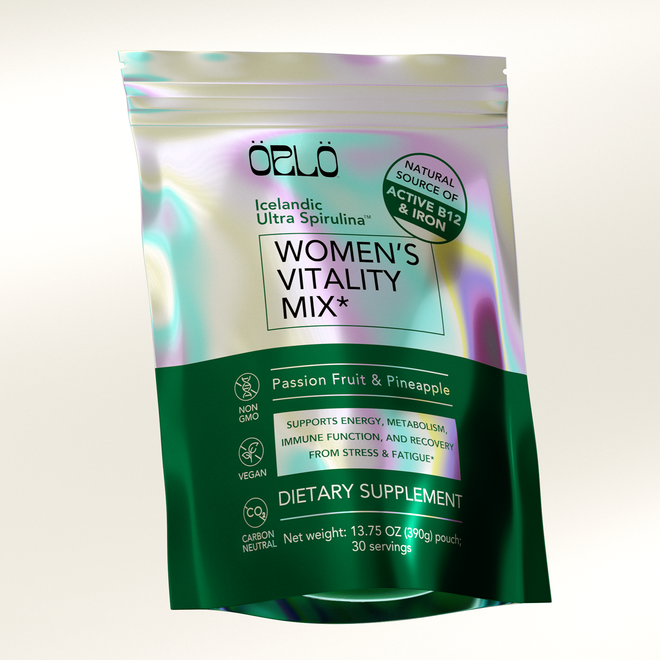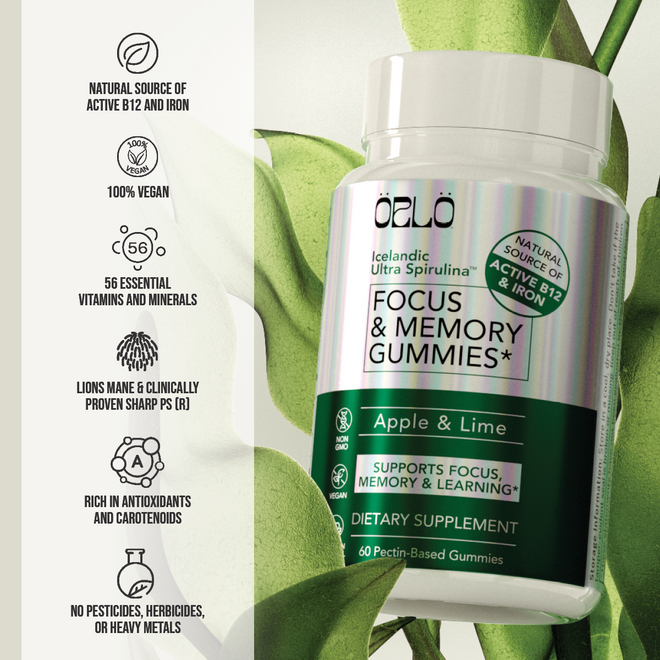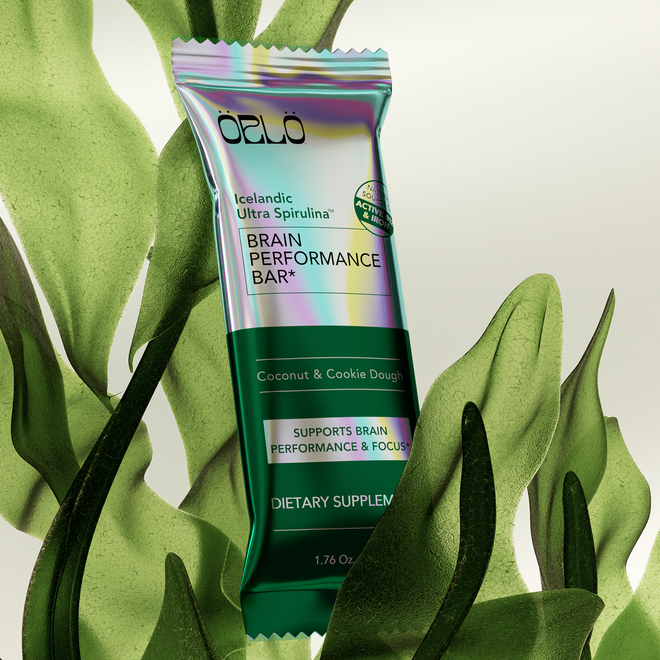25% Off - use code: HOLIDAYS
Regeneration: The Hope Below our Feet With John Roulac
Watch the episode here
The climate crisis is real, and we are now only several harvests away from famine and starvation. But what if there was a solution that already exists to help save the earth and its people? Here to discuss regeneration is John Roulac. John is a hemp innovator, serial entrepreneur, investor, philanthropist, writer, and champion of regenerative agriculture. He was also the founder of organic superfoods brand Nutiva. In this episode, he joins Corinna Bellizzi to share his mission leading a movement toward organic regenerative farming and healthier soils. John talks about helping local farmers, fostering regeneration communities, and promoting agroforestry and food forests as a means to revive barren land. All these contribute to the goal of revolutionizing how the world eats and hopefully saving the planet. Be inspired to do your part with the incredible information from this episode and learn consumer practices that will help support the cause.
Key takeaways from this episode:
- The importance of soil health
- The profound impact of organic regenerative farming
- How to grow water and regenerate the earth
- The benefits of food forests
- How to empower farmers through regenerative farming
Guest Social Links:
https://www.linkedin.com/in/johnroulac/
https://www.instagram.com/johnroulac/
https://www.youtube.com/channel/UCFbZRbl5_AC7FMt2ByzhXTQ
---
Regeneration: The Hope Below our Feet With John Roulac
How Regenerative Agriculture And Agroforestry Provides Long-Term Solutions To Global Warming And Food Security
I have the distinct pleasure of introducing you to a giant in the world of regenerative agroforestry. He's responsible for so much in this space, and that is John Roulac. He is a hemp innovator, serial entrepreneur, investor, philanthropist, and writer. As the 1999 Founder of the organic superfoods brand Nutiva, he has sourced in formulated $1 billion in retail sales of organic superfoods in the past several years.
He is also an executive producer of the Netflix blockbuster in the regenerative agriculture space called Kiss The Ground, which is narrated by Woody Harrelson. He has founded six nonprofit organizations, including Great Plains Regeneration, Agroforestry Regeneration Communities, ARC, and Forest Forever.
---
John Roulac, welcome to the show.
Thank you for inviting me cor on your show.
It’s an honor to have you here. I had the pleasure of interviewing people in this space of regenerative agriculture a few times on my other show, Care More Be Better, including our mutual friend, Paul Hawken. I like to get started here and first ask you, what does this concept of nutrition without compromise mean to you?
It's a provocative name. Nutrition is so important. If you can do it without compromising the planet or your health, that is very important.
You have been an environmentalist your whole life. I love to know what got you started as a young environmentalist.
Two events set me on the path I am now. My parents were a bit different than most people. Some people collect cars, rare art, or things like that, but my parents decided to collect small remote islands.
When did they have a collection of those?
My mom and dad bought a three-acre island when I was a little kid in the Pacific Northwest that had no runny water and electricity. We spent a lot of time playing in the tide pools, among the tall trees, and being in beautiful, lovely nature. It was back in the 1960s. Things have degraded a lot but things degraded in 1600 versus the 1960s. It changed massively. Unfortunately, it has been the worst of late. That set me up to see things a little differently.
We went there in the summers, and during the rest of the year, I lived in the Pasadena, California area, which at the time had no pollution control systems in the 1960s. It was hard to breathe, smoggy and painful to breathe in oxygen. That was in Southern California, 10 miles from Downtown LA. Ten months in a polluted environment, two months in a blissful, clean environment, and that difference juxtaposition influenced me.
Business can be a force for good and be part of the solution. It can be good for people, for the planet and for profits.
When I was 21, an unidentified truck driver dumped nuclear waste 9 miles from my house. That pissed me off. Back then, we didn't have the internet, but we had a lot of people on the radio. The radio DJ talked about it every day for a week. What set me on my life journey was how do we live on this planet in an ecological and healthy way. I combined that with business and campaigns. Several years later, here I am. Here we are.
You spent a long time working in the natural channel like myself and ultimately building responsible food brands that use organic and regenerative means of bringing their products to market. I love for you to talk for a moment about what you're doing differently in this space. I see the brand Nutiva now is also championing a lot of social causes and environmental causes. I love to know how you see this branded responsibility. When you're creating a product, how do you envision a future that can be regenerative in the space of business?
I founded Nutiva in 1999. We grew it right place and at the right time. We grew rapidly and helped pioneer hemp foods and coconut. I stepped down as CEO several years ago. I don't have much to do with the company anymore at this point. In terms of brands, a business can be a force for good. A business can be part of the solution. It can be good for people, the planet, and profits. Sometimes people pay attention only to profits and the people and the planet suffer. At the same time, people overly focus on business, sometimes on the social side, and forget about the bottom line, then their business doesn't do well.
You're cutting off your nose despite your face in that case.
One thing I would say that was for me that I think was successful and did well for, or some things I didn't do, we all learned when you're an entrepreneur, you have this journey, and you learn what you're good at some things, and you're not as good. Hopefully, you surround yourself with people who compliment you there. I focused on the why and culture. There are lots of people who can sell cooking oil in a jar. If people thought that's what the business we were in, we wouldn't have much of a business.
It would be a commodity.
As I ran the business, our goal was to revolutionize the way the world eats. We did that in many ways. When we came to the city of Richmond, California, we put a fruit tree orchard in every public school. We helped fund the movie Kiss The Ground. We’re the first $30,000 to fund that and helped leverage that. I did a lot of different campaigns and things.
The second thing we focused on was culture. When I was initial, I said, “If I work hard, hire a few smart people, and have a good time, we're going to do well.” Once I started getting above 10 or 15 people, I realized that the team and the culture were going to be important. I freaked out reading about books where entrepreneurs would show up, and there will be a couple of hundred people in the company. They walk around and go, “I don't even know who these people are. I don't know why they were hired.”

I didn't want to see that happen, so we put a lot of folks on culture and creating the right environment. A brand can be an expression of a better future and a better possibility. If you're successful at that, it can be financially rewarding, but also, you can make a difference in the world. We need that more. I like to say, “We need more green and a lot less washing.”
Let's talk more about your work with Kiss The Ground. You mentioned briefly that it was with Nutiva that you were able to initially start that first $30,000 that would fund its beginnings. I like to know a little bit more about how that came to be. I understand Woody Harrelson ended up being the voice that narrated it. I enjoyed the film on Netflix. I also know that there's a podcast of the same name. I love for you to talk about your involvement and what people can expect if they take the time to go and watch that film.
Around 2013 or ‘14, I saw a presentation by an old friend of mine and a mentor of mine in the food space, Will Allen from Vermont. His presentation showed that industrial agriculture was one of the largest contributors of greenhouse gas emissions. It made a huge impact on the environment negatively. We could shift how we grow food into regenerative matter and return that instead of an emitter of carbon, greenhouse gas emissions, and all the potential problems with fertilizers, we could be part of the solution through soil health.
I had known some of those things individually or the concept, but I had never seen it all put together. For the next six months, I walked around a bit stunned, like, “How is it that the climate movement? How is it that every major environmental organization? How is it even that the organic farming movement and the natural food industry have no interest in soil health and in organic regenerative farming as a solution for climate change? Am I in some strange reality where it seems obvious?” In 2014, we saw the signs of potential erratic weather, the CO2 levels from burning fossil fuels and etc. After wise, I do a film.
We started on that film. I was like, “I got to milk the filmmaker. I went on a journey to find a filmmaker. I met Josh and Rebecca from Ojai. They took the ball and ran with it in an amazing way and farther than I could have imagined. It was great to support them. Woody did a great job on the narration. It took l six years to do the film, and it almost didn't work. I'm pretty pleased. A lot of people have seen it. There is a new film out called common ground that is going to come out in 2023. That's going to be filmmakers reminding me. They said, “John, it's not going to be quite nice and optimistic.”
We've lost 75% of all winged insects, and that's from industrial culture. We've lost 60% of the plankton in the ocean. Both insects and plankton were losing 1% to 2% a year. We need to wake up from this nightmare of destroying nature. People need to understand food is a bigger industry than the internet. The big food and big pharma, their number one tool is mind control and black hat PR. They have lots of diversions. The most effective diversion they have made in the last several years is they have invented an entirely new term for destroying the planet of a category of foods of industrial foods.
Spray and pesticides are made with GMOs, destroying soils, killing all sorts of wildlife, and they have come up with this word called plant-based. It is one of the most brilliant things that Monsanto, Bayer, World Bank, Bill Gates, Al Gore, and go on down the list have come up with. People believe it. Back in the day, I remember old-school vegans were not my customers. They were like, “We want healthy organic food. We don't want to harm any animals. We want it to taste good. We want it to be full of nutrients. We don't want any Monsanto chemicals.”
Now they're eating the Impossible Burger made of highly processed foods.
Degenerative,industrial agriculture was one of the largest contributors of greenhouse gas emissions.
They lied well that even the most hardcore vegans, with rare exceptions, will never say one bad word about Impossible. It’s like they are a member of the card-caring member of the communist party, and to say anything would be considerable. It ends by the means. I will give you an example of the misinformation. In the last several years, how many times has the New York Times, The Guardian, or Bloomberg said that cows and methane are causing problems for the planet?
It's all over the news constantly.
When was the last time those same publications said that the emissions from synthetic chemical fertilizer plants are the fastest growing greenhouse gas emission, are toxic, and are bad for our environment? They never mention it. The thing is about the methane for the cows. It's a diversion. The life of methane is around 10 to 12 years after the cow releases methane in the same way with buffalo, antelopes, deer, and other animals all over the world. There was no problem with methane from buffalos many years ago.
We had many more of them.
They were much bigger than cows. It's a misdirection.
People negate the fact that a cow creates healthy soil. This closely connects to your work with Kiss The Ground. I had bought an open space preserve in my home in Scotts Valley. In that open space preserve, they have regenerative farming cows. The cows have to be on the land because they need rudiments. The rudiments leave behind their manure, which regenerates the soil. They are rotated between many pastures.
The reason we need rudiments is because it is an open space preserve. They are working to preserve a species of grass, also, a beetle, who hunts by sight, and the salamander. The cow is incredibly effective at helping to maintain the ecosystem so that all of these species can thrive. It's in a regenerative approach. These cows are producing some methane, but they are eating fresh grass. They are eating grass that is growing out of the ground as opposed to something else.
Ultimately, that means that long term, they are healthier. The soil is healthier. The environment and ecosystem that they support are healthier. This is a way we can head forward, and you cover this in Kiss the Ground. I was falling in love with some of these farmers who are taking on the mantle, taking risks, and showcasing over the course of several years that their land was holding more water. They were able to produce the same product without sacrificing their entire harvest because there was a drought. These are things that we need to think about. Sadhguru is an incredible thought leader in the spiritual space. He got all over his Twitter feed. His entire banner is about saving soil.

I visited Ashram when I went to India when I was hunting for coconuts.
I ventured to guess you had an effect on him deciding to take this on.
I had never met him before, but I heard him speak a couple of times. He was quite an interesting character in a big fan of soil health. I will give you an example of one of the powers of hoof animals. It's not cows. It's sheep and buffalo. If you look at the area of the Chihuahua Desert in North Mexico, and you look at vast parts of New Mexico, parts of Arizona, and parts of West Texas. This used to be an area full of grass, seasonal creeks, and lots of wildlife. Over the last several years, we turned it into a moonscape by overgrazing and poor management. People go, “Cows are bad.” They have overgrazed it.
There is a gentleman over there named Alejandro Carillo. As a matter of fact, he is going to be one of the stars in the new film, Common Ground, that is going to come out in 2023. That is a follow-up to Kiss The Ground. His dad called him up several years ago and said, “Son, you need to come back to the ranch.” It’s 25,000 acres. They only had a couple of hundred cows. They had to bring in supplemental hay each year during the summertime, and things were not good.
He started to study. He met some people. They now have a regenerative model where a bunch of cows all together tightly. This way, the cows stomp, leave their manure, etc. They don't come back for another year to fourteen months. When they come back, the grass could be a couple of feet tall or foot tall, depending. It used to be only a few inches, and now it is several feet. They will eat down 2/3 of the grass. The other 1/3 will stay, and they won't come back. This way, the grass puts its energy into the root system. If it's continuously grazing, it causes issues.
He got his neighbors to do it. They have over 100,000 acres in the area. What happened is some neighbors in the distance got upset with them. They said, “You're stealing the rain.” When the rain clouds come over, they come over this land of these 100,000 acres and drop the rain because there is a symbiotic relationship between rain clouds, small water cycle, grasses, and vegetation. There is this intimate connection there.
This is something that gave me the chills when I first learned it. The evaporative microbes that are in the actual evaporating water send signals to the rain clouds to release water. Is that what you're talking about?
Yes. The most important gas that impacts climate is not carbon. You see where microscopic narrow casting only on carbon. Carbon is bad, this or that. We forget about the water cycle and water vapors. That is what is driving these massive amounts of rainstorms and things. By working with the living root regeneration, we can take that excess water and store it in the ground because healthy soil is like a sponge, so we can bring that water back. People, it's easy. Brainwashing is effective.
The most important gas that impacts climate is not carbon. We forget about the water cycle. We forget about water vapors.
Hitler showed it was effective, and now, people have been brainwashed, especially people in the urban and liberal people. They are convinced that the enemy is cows and oil drilling. By saying that, people will freak out, “You're denying climate change. Burning oil and coal causes pollution, and we need less pollution.” The reason why we're having many of these problems, a big portion of that is this excess water. With tree regeneration, not only can we help the water cycle, but we also fix the carbon cycle at the same time.
The root system can sequester carbon. The forests themselves can go ahead and sequester carbon and give us food and other resources like oxygen, but there isn't enough space that has been allowed to regenerate. You talk about overgrazing of land. That is this perception we have of even farming with animals. We would let them graze until all that is left are the roots and not enough is left to ultimately sequester the carbon that the grass would otherwise be capable of doing.
I have read Paul Hawken’s Regeneration from cover to cover, and on my other show, Care More Be Better, I went through a deep dive chapter by chapter. By doing that, I learned the information a lot more effectively. I was surprised to learn about the small water cycle itself and its impact on where the water goes and where it doesn't.
I also found that one of those key elements that you're speaking of and a piece you wrote of how our waterways are effective, ultimately wanting to turn our waterways blue again. I like to invite you to talk about this because it's not how we use water. It's also how we farm with it. It's also the pesticides, the fertilizers, and all of these things that we have grown used to using, which impact the clarity of the water that is in our riverbeds that feeds our water tables.
I wrote an article called Make America's Rivers Blue Again in 2021. I published that in Substack. Before I get into that article, I want to go back to Alejandro Corillo, the cow whisper from the Chihuahua Desert. Now, whereas dad used to have 200 to 250 cows, he now has 650 cows, donkeys, and sheep, and he could use a couple of hundred more. He has increased the capacity for cows on the land by 4X. Some radical vegan says, “Those are magical cows.” They are convinced.
The story that has Monsanto is told that the vegetarian community, not all, there are plenty of vegans, that I know that are supportive of regenerative agriculture, whether it's plant-based or animal-based, but a lot of foam for this is how do we feed 9 billion people? We don't have enough land, and we're running out of land. We need to get rid of all the cows and do these giant steel bats to make cultured food. It’s like soil and green.
We need 500,000 times more of the capacity that we have for culturing and fermenting foods and liquids. Where is all that steel going to come from? You have to plug it into a socket. One of the things that are going into this article is for people to understand that regeneration runs on nowaday’s sunlight. The sunshine, through photosynthesis, drive plants and animal cycle that all that beef was grown. There were no pesticides, chemicals, and steel black tanks that they had to plug in and grow for weeks at a time, whereas degenerative agriculture runs on yesterday's sunlight, which is plants and animals that decompose into petrochemicals and oil that they process into petrochemicals. Which one do we want to run on, nowaday's sunlight or yesterday's sunlight?
The irony is that people have hijacked the vegan movement, and they want to run on yesterday's sunlight. Anything that runs on nowaday's sunlight that involves animals is evil and bad. In this article, hundred years ago, the rivers are blue. They're technically not blue, but the reflection from the light. In the 1960s and 1970s, the rivers were catching on fire even in Ohio. Brown and gray, from water, from soil washing away, from chemical fertilizers, pesticides, manure, and lagoons from CAFOs, Confined Animal Feed Lots, which are not they are degenerative. We said, “Let's clean up industrial waste.” They gave agriculture a pass. We have changed the color of the rivers.

When we applied the synthetic fertilizer, which is from fracked natural gas, and injected it into the ground, and when it rains, that washes off, and it washes off from the farm to a little creek to a bigger Creek to a river and then to the ocean. It discolors all of that. Regenerative agriculture restores our waterways and degen our culture.
Here in California, the leading professors and people who are well-meaning think that we should have less plant growth in the Sierras because that would absorb more water, so then there wouldn't be much water. If the San Joaquin Valley would run out of water, we should be restoring the watersheds in the Sierras right now. That is what Gavin Newsom and the leadership there do. Unfortunately, they are not that innovative.
There are people who are in the team that is working on that, but it's bureaucratic. The key with water flow and land is to slow it, spread it, and sink it. This is what beavers do. If we did this in the Sierras, through small chunk dams, and reintroducing beaver, and if you spent $1 billion or $2 billion, we could do phenomenal things, but we're locked into bringing water from distant areas.
The Colorado River is the primary example.
People don't know this, but California will not be growing winter vegetables in 2023.
It's a big deal because we produce more food than almost any other state.
In the Imperial Valley, they're not going to get access to the river water in 2023. There are farmers and ranchers who are working. I went to Regenerative Almond Field Day in the Central Valley in February 2022. It inspired me. There were a lot of farmers and ranchers using cover crops, using animals growing between, and grazing in between almond orchards regenerating the soil. The heads of the California Almond Board were there, some of the board members and the president. I met a lot of interesting people.
We can do this, but we need to focus on it. Unfortunately, now there is a lot more washing and a lot less green when it comes to where we're focused on. The irony, as I mentioned before, is that most environmental organizations do not understand the ecology and natural systems. They are usually even afraid to talk to people who know anything about it. They want to blame cows and oil companies, but the thing is, they are paid by Wall Street and wealthy foundations, which have portfolios of Bayer, Monsanto, Exxon, and Pharma. Every major environmental organization is captured. It's bizarre.
If we fast forward into what the carbon level is going to be at the current rate by 2035, there's no plankton in the ocean at that point.
They pair at this, “The cows are bad.” They never talk about the biodiversity collapse of insects and birds. They all focus on wolves and things. I have called them out in different articles, especially the Sierra Club and 350.org, which are well-known. They are good people. I have talked to them. When you talk to them, it's like, “Is there anybody there?” They should call themselves 450.org. The environmental organization, their plan is to move us to 450.
I don't know what that is. What is 450?
We're at 420 parts per million in CO2. We used to be at 410, and now we're going to 422. The plan that they said is, “Oil and gas are bad. Oil and coal don't drill. Solar, wind, and EVs are good.” End of subject. That's what the climate movement in the United States and Europe has said for decades.
Oil is bad and green energy is good.
Maybe they will say a little, “We should protect forests and stuff.” They will have all sorts of things. How many environmental organizations are going, “Don't buy a second car, get a bicycle?” Why did the Biden administration and the democratic party pass unanimously from their vote to spend hundreds of billions of dollars on solar, wind, and electric cars, and they took out the $10 billion for electric bikes? Electric bikes are a phenomenal way for transportation, whether it's rural or urban. It's a great way to save energy. We hardly even focus on it.
Not that solar and wind aren't good. We need to do more of that. The other irony is when you look and see how much rare minerals we need, whether it's copper, cobalt, or lithium, to power solar, wind, and electric cars. They're working on some things that don't involve lithium, graphite, and other things. Still, we're going to need a lot of these minerals. We don't have enough minerals. We have 20% of the amount of copper that we're going to need in the next twenty years. It takes 7 to 14 years. They never even bothered to calculate that.
They had these announcements. I have met Gavin and raised money for him because I knew he was going to become governor. I spent time with him and other experts of Kiss The Ground about regenerative agriculture. He has been doing some good things for agriculture compared to most Democrats. They are more folks on other issues. He said, “We're not going to allow any gas-powered cars to be sold by 2035.” Five days later, they told people, “Don't plug in your cars.”
I live here in Santa Cruz County. PG&E has said, “We have enough energy for air conditioning or electric cars, but not both.” That's grid problems that we're going to work through. The reality is that we're far behind where we need to be. They are now our plans to both melt permafrost to get at rare earth minerals. The most recent proposal I saw was drilling into our seabeds to get at rare earth minerals.

I’m always an advocate for the ocean. I worry about the fallout when we start to approach undertakings like that. That is vast and destructive to the sea floor. We have to come up with something better. Don't we have enough bright minds working on this to come up with a better solution than melting permafrost and drilling into seabeds?
Yes, we dress. We need to reduce our lifestyle and consumption, but that is not what the Sierra Club, 350.org, Environmental Defense Fund, NRDC, or all these groups tell people in newsletters. As a matter of fact, one environmental group was Sierra Club, 6,000 to 7,000 people watched it. They watched our film. They were blown away. They said, “We have never heard the idea of this.” How many newsletters have the Sierra Club sent out?
It's not like the Sierra Club is a bad group. They're in this group think. I worked with them to protect California Redwood Forest several years ago, and we're close with them. They were one of the groups that didn't sell out. There are also groups like National Audobon, which is working with ranchers, and they started up a program. There is this cool African-American gentleman that works with ranchers in the Midwest. He has created this whole program for Audobon. There are people doing some good things there.
Let's talk about oceans for a bit. I'm a big fan of healthy oceans, and I love the oceans. I wrote an article about the fact that in Houston, we have a problem with ocean acidification. It's because of all these excess carbons going in the oceans, and it's becoming acidic. The microscopic plankton's skeletal structure is dissolving.
If we fast forward to what the carbon level is going to be at the current rate by 2035, there will be no plankton in the ocean at that point. Instead of burning fuels to make plastics, we can make hare as straw from Loliware, a company that I know the founder, Sea Briganti. It’s an amazing company, and this is made out of kelp and compost. This is a new thing made out. They can also make other plastics. They're working on this. There is another company called Primary Ocean that is working with giant kelp that grows here on the West Coast and turns that into fertilizer to feed the soil. We need to learn to reforce the oceans. We have lost 99% of the kelp forest in California, Oregon, and Washington
That is because of biodiversity loss and the shrinking territory of the sea otter because they eat the urchins. The seaweed can reattach to the sea floor and expand its reach. I don't know how many people are aware of this, but more than 50% of the oxygen we breathe comes from algae and kelp. All these species of macroalgae and microalgae that are growing around the planet give us oxygen. They're critically important.
We need to grow more of it. The department of energy put out a grant to look at where is the optimal place to grow more kelp through kelp farming. That is starting to go on here on the West Coast. The other thing is by removing urchins. There is a group called the Waterman's Alliance. They are removing urchins, getting the kelp to come back much more, and bringing the abalone back. In Sonoma County alone, there are a billion urchins.
I have been a scuba diver for most of my adult life. I have dove all over California from Monterey Bay all the way south into Mexico. You will see these explosions of the purple urchin all along the coast of the Santa Barbara area and a ton of sea hairs, but it looks barren. There isn't much life there anymore because of this explosion of the purple urchin in particular. It’s conceiving as if they reintroduce otters in these pockets. They may even be able to restore the kelp forest off the Coast of Oregon to its one’s thriving conditions. Even there has been a loss because it's a shrinkage of the territory of the sea otter who loves to eat those purple urchins.
The number one export of the United States, by tonnage, is top soil.
They were hunted, especially the Russians, who started to hunt those back in the 1840s and 1850s for the kelp. We need to take care of the ocean more. I want to talk a little about our agroforestry projects.
I understand that you're doing some incredible work in the Global South planting food forests, which is a topic I love. Please talk to us about that.
In 2021, with my cofounder Hannah Eckgerg from the Abundant Earth Foundation, we formed Agroforestry Regeneration Communities. We're a network of community-based agroforestry, putting in food forest. It's a simple way of using a variety of such as nitrogen fixing trees, which as if your own factory of nitrogen. It's nature and replaces bags of fertilizer with green leaves. We plant those and other fruit trees and crops.
Our work is in Guatemala and also in East Africa. Guatemala is with the contour lines. If anybody is going to Antigua, Guatemala, they have a center. We have opened there. We work with the smallest farmers, people who have dirt floors. Many of them don't have bank accounts, have been ignored, demonized, and harassed for the last many years through colonialists and now neocolonialist policies. They are grateful when they learn that someone wants to work with them.
I'm the person who helps bring some resources and best practices and introduce people together. We were able to get $400,000 from one tree planted to do this work in Guatemala. We trained them. We also do row crops in between alley crops, nitrogen-fixing trees, avocados, fruit trees, mangoes, and citrus. We grow cassava, ginger, turmeric, pineapple, and sugar cane. With cassava, we have turned that into flour. We're making gluten-free jackfruit pizzas in Antigua.
Wasn't cassava the root of tapioca?
Tapio is from cassava. Cassava is one of the most important crops in the world. We also grow a lot of that in Malawi. We have a project that we have been supporting in Malawi. It is growing rapidly with a Permaculture Paradise Institute. They are located in Central Malawi. We have trained over 1,200 farmers in five days around permaculture and agroforestry. We trained 65, and a good portion were women.
A lot of these farmers there, ironically, whether it's in Guatemala or Malawi, the main crop they grow is maize, and they don't grow anything else. Instead of doing that, we introduce agroforestry. If you're still going to grow a bunch of maize, plant gliricidia. It is a nitrofixing tree, our fertilizer tree without running on nowaday’s sunlight, not yesterday's sunlight. We planted every five meters. They have a big corn crop. Before they are going to plant the corn the next season, they compost it, chop it a bit, and drop all those leaves that are high in nitrogen that power that corn. As the corn grows up, the tree grows, and it gives it some partial shade, which is helpful.

A lot of these farmers have outdoor showers. They sometimes will carry water a mile away to get it. We plant banana trees. The gray water from the showers grows banana trees. We have expanded to Southern Malawi. Malawi has 18 million people. This is interesting. Both Malawi and Guatemala have 18 or 19 million people. The number one crop they grow is maize. They have both been pressured from the federal government, the United States, the IMF, the World Bank, and the United Nations to use chemical fertilizers from Bill Gates and the World Economic Forum. You go down all these letters supported by environmental groups.
Environmental groups are attacking cows, not dealing with chemical fertilizers. They are trying to deal with First World problems but not dealing with the fact that there are 500 million smallholder farmers. Both of those countries can transition to agroforestry working with nature. We have expanded that program. When there is a drought, they get much better yields. Remember, these farmers are one harvest away from starvation. Whereas those of us in First World countries like the US or Europe we're ten harvests away from starvation. We don't know it yet for many, not everyone.
You can only destroy our soils. The number one export of the United States by tonnage is topsoil, billions of tons a year. To give people orders, we need to help our soil here, but we also need to help in the Global South because, in our wealthy lifestyle, we can get on planes and have iPhones and things because we have been taking resources from the Global South. Those of us in the Global North can live a 100-year blowout of material resources on the planet.
Going back to Malawi for a moment, I met this Irish aid worker. He has been working in Malawi. He is on an island called Chisi Island. There are 4,000 people on this island. It's a remote island on the second largest lake in Southern Malawi. There are leopards and monkeys. He is committed to helping people with education and better food systems.
I was inspired by what he was going to do. I said, “Let's help.” We took two of their people, a man and a woman. One of them, I don't think it, ever left the island. We took them 300 miles away by bus to a strange place. It is still in their country. We taught them all about our culture. We're now going to recruit twenty more. They told all their friends. We visited the chief. He said, “Yes, we like this.” It's very remote. The average income is barely a couple of hundred dollars a year.
We're going to teach them about permaculture and agroforestry. We're going to do a program for their kids. Interestingly, somebody from Switzerland, an NGO, reached out to us and said, “We have identified Malawi as a country that wants to focus on education. We like what you're doing.” I talked to them. We're looking at teaching the kids there how to grow trees and provide them trees and plant. We're going to do the same with the Permaculture Paradise Institute.
In Central Malawi, where we have taught 1,200 farmers, I said, “If you drew a circle 30 kilometers out of about 12 miles, what percentage of the farmers will have taken your training?” Mr. Biswick said, “5%. By the end of this year, it will be 10% of the farmers.” Most of them, when they took the five-day class training, they agreed to train nine other farmers. We have trained 65 farmers, which means we're going to have 650 farmers. We have extension agents that go around to teach these people.
One of the things that we don't understand enough out here in the West is that going from a mono-cropping to an agroforestry method will mean that they're harvesting around the year some a crop, which then protects them. Not only do they get more nutrients that are available in their local diets. If one crop fails, they get 7 or 8 others.
Can we navigate the greatest distance in the world, between humanity’s heart, and humanity’s brain?
They have stunted their growth. With these policies, who make the loans to the governments? Who goes to Africa and says, “They should be using chemical fertilizers?” Bill Gates. Who funds all of this? USAID. Americans are in denial. These are crimes against humanity. These are not good things. Yet, we hide under the banner of who are Democrats. When Donald Trump is the President, I'm a Republican. We wouldn't do that.
Where is the ability to see with open eyes and information? We have become tribal and disconnected from reality that the nutrition is much better. We're planting over in Malawi yams and cassavas. There are all sorts of native fruits and berries. Most of them have disappeared when they fence it off. The animals don't come and eat it. They get all this fruit back. They don't even plant it. It comes back. When he brings people through the site, it's amazing.
My role is I find these change agents. We back a bunch of them, and some of them end up not delivering as much. With $10 million, we could transform Guatemala and Malawi. Yet, we have few organizations showing up. I'm one guy with some friends who were supporting on a small scale. We have already planted 5,000 food forests. Our goal is to plan 100,000 food forests by 2027. My buddy in Malawi says he is going to do 100,000 food forests just in Malawi. We need more resources and support. We continue down the road.
I like to say, “If you want to go fast, go alone. If you want to go far, go with many.” If you look at a forest, are there bears spreading synthetic fertilizers in the forest? Is the forest dynamic? Does it grow well? Is there irrigation in forests? That's when we tell farmers, “We're going to model the forest.” We grow water. We can take areas that are dry and destitute. The soil is washing away. We don't plant trees right at the start. We plant grasses and other shrubs. Over time, it starts to bring back the water.
We can regenerate the Earth. We can make it truly the garden. The question is, can we navigate the greatest distance in the world? One indigenous elder told me from Greenland once. He said, “John, the greatest distance in the world between humanity’s heart and humanity's brain.” That's where we're at now. We have all the solutions that are available for us, and some we still need to work on, but we need to work on being open. I constantly learned. What I thought was true several years ago maybe wasn't. I had to go, “Maybe I was wrong.”
Isn't that the truth you have to learn?
Maybe I could listen. I see many Millennials lecture me. I have been at this for many years, and they're lecturing me. They have never been to a farm or a ranch. We have experts all over the United States and Europe in food. They never go to visit farms and ranches. They are the ones to convince the Biden administration to give $2 billion for fake cellular meat and nothing to the ranchers.
We could talk about that on a whole different episode where we would talk about the crazy ideas coming out of Silicon Valley, like air protein made by microbes or chicken grown in a Petri dish. Much money is going to these ideas, which are another iteration of an extractive view on how we build things and reductionist, as opposed to collaborative. We're not regenerating our systems. We're creating some new microcosmic tool that is attractive to investors but which may not do anything originally intended and could have consequences that we haven't thought through yet.

I will give you an example. It is Beyond Meat. They don't even include transportation in their cost of goods. They have negative margins. Their cost of goods is twice what it costs for regular meat. They have less than six quarters of cash. They are likely to be delisted from the stock market and sold off for bankruptcy, but they owe $1 billion. It's going to go into bankruptcy court. That's going to be an example.
Most companies have been funded by Wall Street and Silicon Valley. The fake meat space will close their doors in 2024 because they lose money. It was all a boondoggle. What people can do individually? How many people have lawns and yards? They're spraying all sorts of chemicals. I'm working right now on how to make biological fertilizers and bio-stimulants plant food for homes. That is a new enterprise that I'm working on right now. I'm in the R&D process, talking to people all over.
You can grow some veggies and herbs on your deck inside your house. Go to the farmer's market. Another thing that is important to do for your own personal health is to do the plank. I recommend everybody. If you do the yoga plank every day for 30 seconds, you will be amazing what will happen in 30 to 60 days. Some people have a yoga practice or walking is good.
Describe what a plank is for somebody who doesn't know.
If you're on the ground, laying on the ground, and you're up on your elbows, like in the prayer position.
It's like a pushup, but you're static. You're staying in place.
I had people lose 10 pounds in 6 weeks doing that.

I heard stories of improved digestions, specifically only from that one act.
I got a call from a gentleman, Mr. Billman. He has been researching mushrooms for many years. One of the things they found is there is a rare amino acid called Ergothioneine. ERGO is a shorthand. It turns out that it has a huge impact on our health. In agriculture, regenerative crops grown without tilling have a much higher level than degenerative or even organic. American consumption is 1/5 the level of what it is in Italy and Japan.
Mushrooms and miso are good sources of it and not the button mushrooms, but the shiitaki mushrooms, oyster mushrooms, and lion’s mane. That is a simple thing. Learning about that, eating more regenerative foods, eating more mushrooms and omega-3s. Nutiva helped pioneer hemp seed and hemp oil. I know you're active in that. Omega-3s are such an important thing in our diet.
We dove deeply into the story of rice with the Founders of Lotus Foods and their regenerative agricultural certified products. They got to talk about the fact that the rice that has grown this way has more phytonutrients. Nuttier richer flavor. The varietals are able to grow with less water, giving more crops per drop. All of that plays into your nutrition profile.
I also like to point out specifically with mushrooms. There is research that shows that putting your mushrooms out in the sun in direct sunlight for a few minutes increases their levels of vitamin D. It's another way to get healthy vitamin D3 into your system, which is immunoprotective and healthy for you. To your point, doing things like consuming an omega-3 supplement like those produced by Örlö Nutrition every day supports your long-term health supports, gut health, and brain health.
We don't get enough of the healthy fats here in the West. We need to rebuild how we eat, what we consume, and support those regenerative agriculture movements that are around the globe taking on big systems. We have to talk about it more. We have to commence this conversation over and over as we're sitting here battling over what to do with the Colorado River and how much alfalfa is going to be able to be grown in 2022 because it's such a water hog, which impacts farming and available resources there. These are complex systems. Water use is an immense issue. Regenerative agriculture is part of the solution because you can get more water to stay in the soil so plants can grow. This is a no-brainer.
Health begins in the soil. Healthy soil leads to healthy plants, healthy animals, healthy people, a healthy climate, and a healthy ocean.
It's all connected. We are living in an ecosystem. We have to stop thinking about it, like the inputs and controls. Thank you so much for joining me, John. This has been my absolute pleasure.
It’s great to be here, Corinna. Thank you for what you do in the world. Let's regenerate.
---
As we think about this discussion, I want to invite you to do a couple of things. Everyone should go and watch that film Kiss The Ground on Netflix. It is somewhat entertaining. Also, highly educational. You will find yourself thinking about what you can do differently and even supporting those local farmers in your communities. Going to the grocers, sure, but perhaps going to that farmer's market first.
To find out more about John and his work, you can always reach out to me directly via OrloNutrition.com. Thank you for joining us on this journey. If you have questions, please reach out via social channels @OrloNutrition, or send me an email directly to Hello@OrloNutrition.com. As we close this show, I hope you will raise a cup of your favorite beverage with me. As I say, in my closing words, “Here's to your health.”
Important Links
- Nutiva
- Kiss The Ground
- Great Plains Regeneration
- Agroforestry Regeneration Communities, ARC
- Forest Forever
- Care More Be Better
- Vermont
- Twitter - Sadhguru
- Regeneration
- Make America's Rivers Blue Again
- Sierra Club
- 350.org
- National Audobon
- Loliware
- Primary Ocean
- Waterman's Alliance - Facebook
- Abundant Earth Foundation
- Permaculture Paradise Institute - Facebook
- World Economic Forum
- Beyond Meat
- Lotus Foods
- Örlö Nutrition
- @OrloNutrition - Instagram
- Hello@OrloNutrition.com
- https://JohnRoulac.com/
- https://www.LinkedIn.com/in/JohnRoulac/
- https://www.Instagram.com/JohnRoulac/
- https://www.YouTube.com/channel/UCFbZRbl5_AC7FMt2ByzhXTQ
About John Roulac

John is a hemp innovator, serial entrepreneur, investor, philanthropist, writer, and champion of regenerative agriculture.
As the 1999 founder of the organic superfoods brand Nutiva, he has sourced and formulated $1B in retail sales of organic superfoods in the past 20 years. Through his leadership, Nutiva became the fastest-growing superfoods company on the planet and was named one of Inc. magazine’s fastest-growing companies in America for seven years in a row.
He is also an executive producer of the Netflix blockbuster regenerative agriculture film Kiss the Ground, which is narrated by Woody Harrelson.
John was blessed to spend his childhood summers on the islands of the Pacific Northwest, where he played among the forests and tide pools. When nuclear waste was dumped nine miles from his California home, John’s ecological awareness was awakened. He began his central life journey: to study natural systems and discover practical solutions to pressing environmental challenges.
Over his career, John has founded six non-profit organizations, including Great Plains Regeneration, Agroforestry Regeneration Communities (creating regenerative food forests), and Forests Forever which placed the California Forest Protection Act, Prop 130, on the California state ballot in 1990. His passionate hemp advocacy brought him to sue the U.S. Drug Enforcement Agency. This long legal battle culminated in a historic 2004 federal court victory to keep hemp foods legal. He is a pioneer of the modern home-composting movement and has authored four books on hemp and composting that have combined sales of more than one million copies. He has been interviewed on numerous radio and television programs and has been widely quoted in the print media—from Wired magazine to the Los Angeles Times and the Wall Street Journal.




